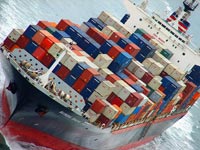 Containership operations has always been like riding a roller coaster, with many highs and lows and unexpected twists and turns. One sign of this is the fluctuating speeds of container ships over the years, going from slow to fast to slow to fast to and now to slow, once again.
Containership operations has always been like riding a roller coaster, with many highs and lows and unexpected twists and turns. One sign of this is the fluctuating speeds of container ships over the years, going from slow to fast to slow to fast to and now to slow, once again.
Slow Trip Across Sea Aids Profit and Environment
Many consider the Ideal X, a converted T2 tanker owned by Malcom McLean, which carried 58 containers in 1956, to be the first containership. The Ideal X had a top speed of around 15 knots. In 1972, McLean had built eight of the largest containerships in the world at the time, the magnificent SL-7s. They could carry 1,000 containers at 33 knots. They were indeed the clipper ships of the containership age and they steamed straight into the oil crisis of 1973, where oil prices tripled and continued to rise. The SL-7s were ultimately sold to the US Navy for conversion to Fast Sealift Ships.
Continue reading

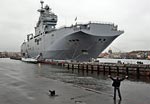 Does politics make for strange shipmates?
Does politics make for strange shipmates? The Sea Shepherd farce continues. The ex-captain of the Ady Gil cut through anti-boarding nets to board a Japanese whaler and was immediately arrested. In related news, Sea Shepherd crew onboard the Steve Irwin, a vessel named for the television host of the show “Crocodile Hunter,” are now throwing fake crocodile eggs at the Japanese whalers.
The Sea Shepherd farce continues. The ex-captain of the Ady Gil cut through anti-boarding nets to board a Japanese whaler and was immediately arrested. In related news, Sea Shepherd crew onboard the Steve Irwin, a vessel named for the television host of the show “Crocodile Hunter,” are now throwing fake crocodile eggs at the Japanese whalers. Here is an intriguing article suggesting that we humans have been taking to the sea for far longer than had been previously recorded. Recently stone tools have been found on the island of Crete which date back at least 130,000 years and may be much older. As Crete has been an island for more than five million years, this suggests that those who carried the tools to the island were very ancient mariners indeed. Thanks to John for passing the article along.
Here is an intriguing article suggesting that we humans have been taking to the sea for far longer than had been previously recorded. Recently stone tools have been found on the island of Crete which date back at least 130,000 years and may be much older. As Crete has been an island for more than five million years, this suggests that those who carried the tools to the island were very ancient mariners indeed. Thanks to John for passing the article along. An interesting perspective from the The
An interesting perspective from the The 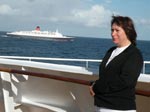 Strange but true. Digital memory cards are indeed an amazing technology.
Strange but true. Digital memory cards are indeed an amazing technology.

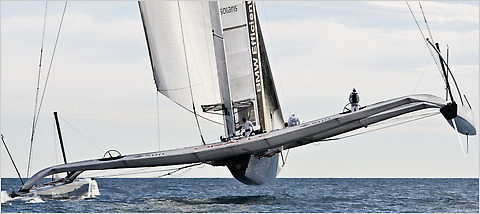
 As truly awe inspiring as the huge and high tech America’s Cup boats are, we shouldn’t forget that iceboats are the real speed demons on the water (even if it is frozen.) Will at the Tugster blog has some
As truly awe inspiring as the huge and high tech America’s Cup boats are, we shouldn’t forget that iceboats are the real speed demons on the water (even if it is frozen.) Will at the Tugster blog has some 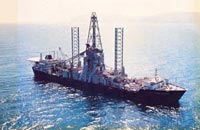 Over thirty years ago when I was in college studying naval architecture, a classmate of mine got a summer job working as a naval architect for Sun Shipyard helping to design some part of the new deep sea mining ship, the Hughes Glomar Explorer, being built for Howard Hughes’ Global Marine. Years later my friend was chagrined to learn that the ship he was working on was not intended for deep water mining but was a top secret CIA project to raise the K-129, a sunken Golf Class Soviet submarine. The cover story was that the ship was intended to raise magnesium nodules from the deep ocean floor.
Over thirty years ago when I was in college studying naval architecture, a classmate of mine got a summer job working as a naval architect for Sun Shipyard helping to design some part of the new deep sea mining ship, the Hughes Glomar Explorer, being built for Howard Hughes’ Global Marine. Years later my friend was chagrined to learn that the ship he was working on was not intended for deep water mining but was a top secret CIA project to raise the K-129, a sunken Golf Class Soviet submarine. The cover story was that the ship was intended to raise magnesium nodules from the deep ocean floor.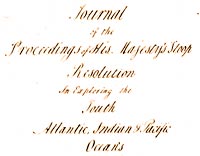 Last October, we wrote about how researchers are using eighteenth century Royal Navy ship logs to study climate change. (See
Last October, we wrote about how researchers are using eighteenth century Royal Navy ship logs to study climate change. (See 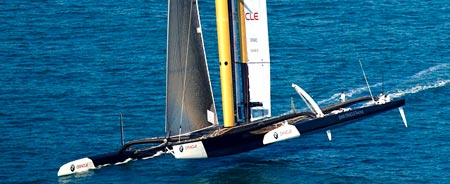
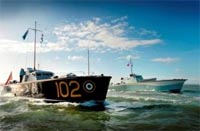
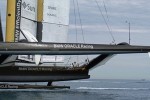 The physics here is fascinating. How is it possible that the America’s Cup challenger ”USA” can sail at 22 knots in only two knots of wind?
The physics here is fascinating. How is it possible that the America’s Cup challenger ”USA” can sail at 22 knots in only two knots of wind? 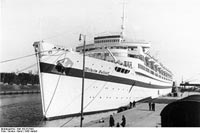 Many ships carrying civilians were sunk during World War II by both sides. If current estimates are correct, the torpedoing of the
Many ships carrying civilians were sunk during World War II by both sides. If current estimates are correct, the torpedoing of the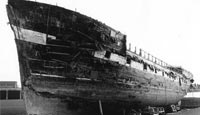 The
The 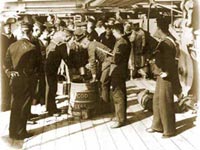
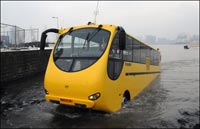 This September, we posted about the popular and nearly ubiquitous “duck tours” using refurbished World War II DUKW amphibious trucks, or vehicles inspired by them, to take tourists on tours in cities and resorts around the world. (See
This September, we posted about the popular and nearly ubiquitous “duck tours” using refurbished World War II DUKW amphibious trucks, or vehicles inspired by them, to take tourists on tours in cities and resorts around the world. (See 